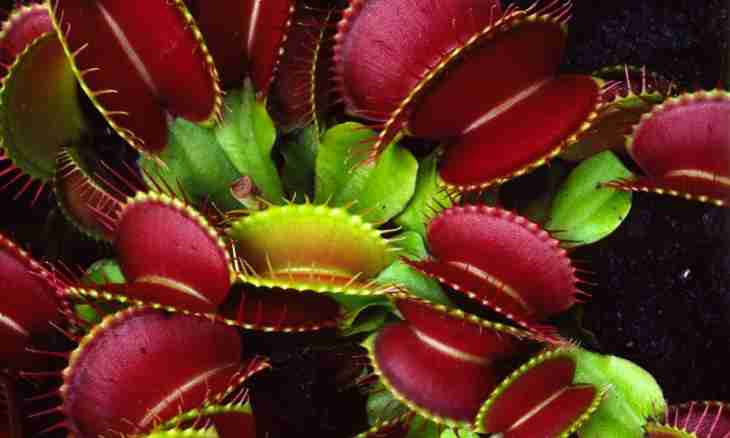Green plants on our planet eat due to photosynthesis, that is sunlight, carbon dioxide and water. But there are such that wishes to diversify a diet with "a live forage" is so-called predatory or insectivorous plants.
As prompts the name, insectivorous plants, except usual photosynthesis, eat insects, sometimes even frogs and lizards. They are presented more than by the 600th types relating to 19 families.
Predatory plants, as a rule, on sour soils poor in minerals, and a lack of nitrogen, potassium grow, phosphorus they fill from an animal forage.
Carnivorous plants can be divided into two big groups on type of lovchy devices — active and passive. Passive emit adhesives which hold insects, or possess cavities — small jugs, bubbles, having got to which production cannot be chosen and is digested.
Active plants move to catch and hold food. In their arsenal of a trap in the form of traps or crab claws, the slamming jugs, the displaced sticky leaves.
Insectivorous plants, despite the exoticism, are widespread practically worldwide, from midlatitudes to equatorial - only in the territory of their CIS 18 types live.
RosyankaRosyanki live mostly in Australia, but their representatives on boggy areas of a moderate belt meet. Leaves of a rosyanka are covered with thin hairs, on the end of everyone — the droplet of a sticky secret similar to dew. When the insect attracted with a smell sticks to a droplet, the leaf of a plant is displaced around production and digests it.
The big contribution to studying predatory plants was made by the famous naturalist Charles Darwin. In 1875 he published the book "Insectivorous Plants" where he summed up results of fifteen-year researches.
Venus flycatcherThe Venus flycatcher differs in interesting we dodge adaptation — two shutters with long hairs on edge slam like a trap when the insect lands between them. Digestion of production takes about ten days. The flycatcher is capable to distinguish small foreign objects from living creatures, and works only on the last. It is possible to contain a Venus flycatcher to houses, at observance of necessary conditions — the good illumination and humidity, soil structure and, of course, a live forage. Only, please, do not overfeed a plant — it can lead to his death.
NepentisNepentisa differently call kuvshinochnik because of lovchy devices. On the ends of leaves of these long lianas reaching 20 meters there are bright small jugs. The insects attracted with a smell, creeping on edge, often fall on a bottom of a small jug and, without having an opportunity to be chosen on a slippery surface, are digested.

